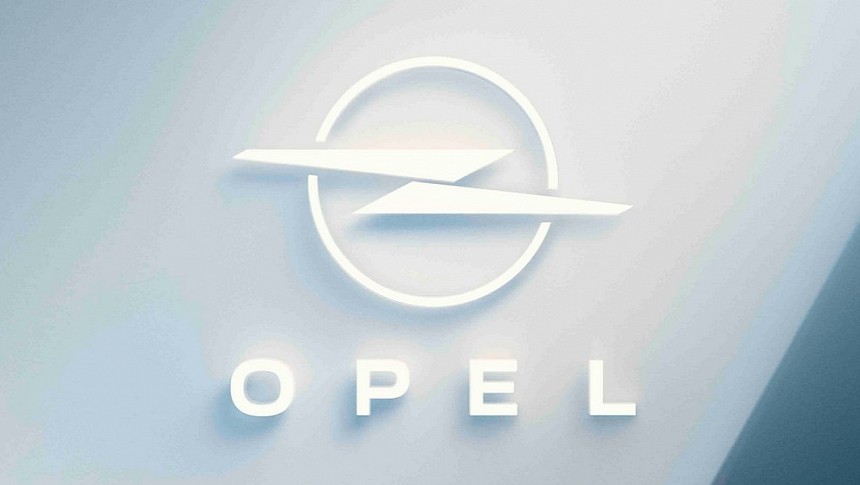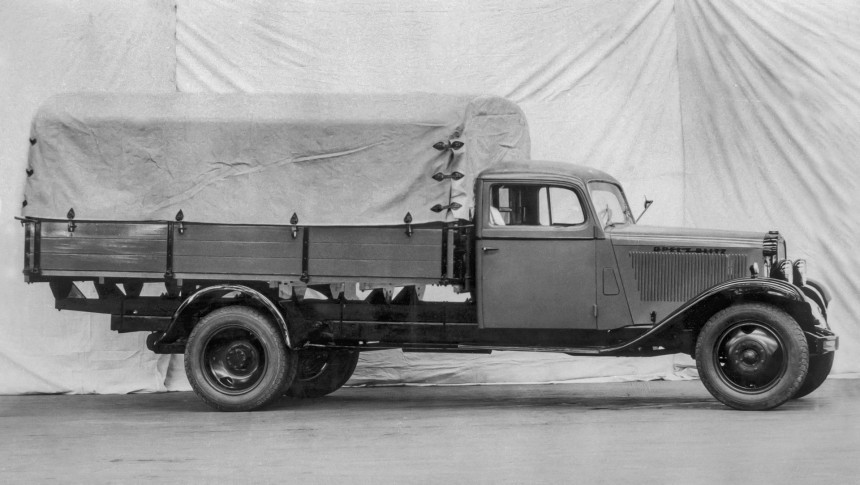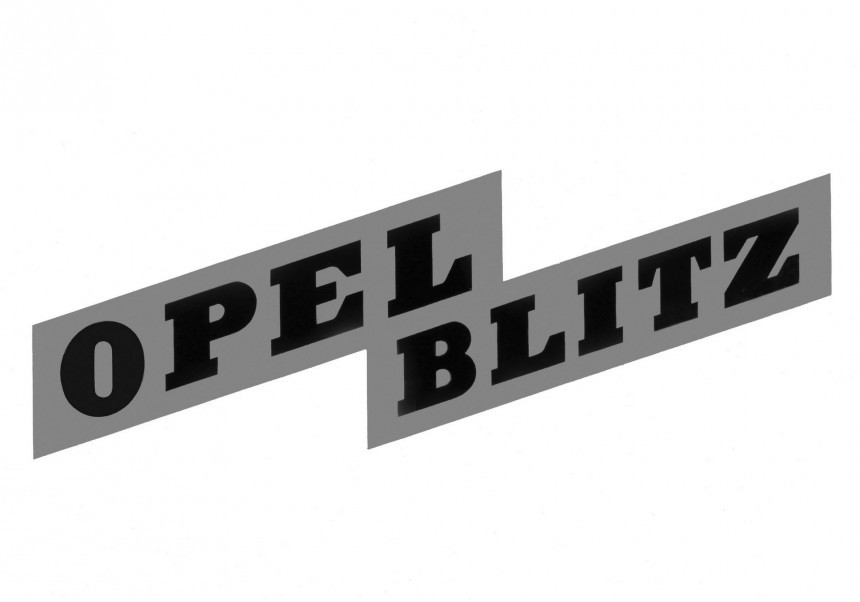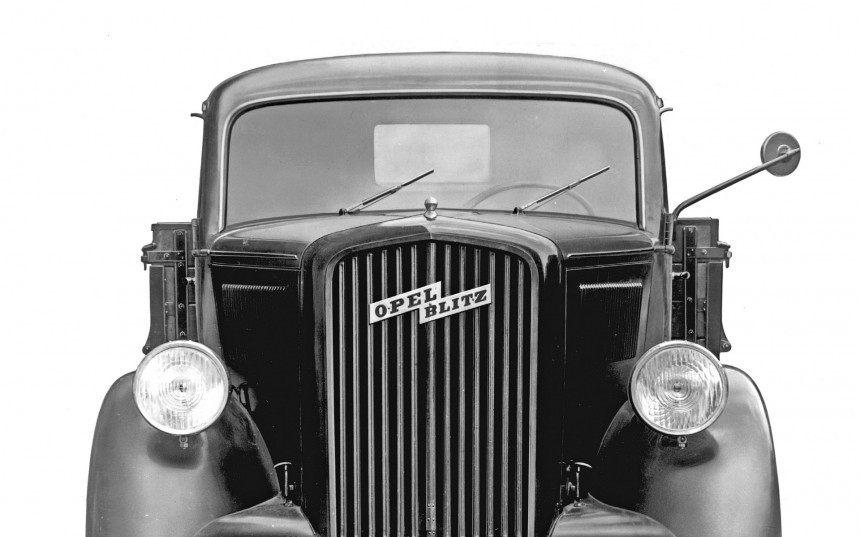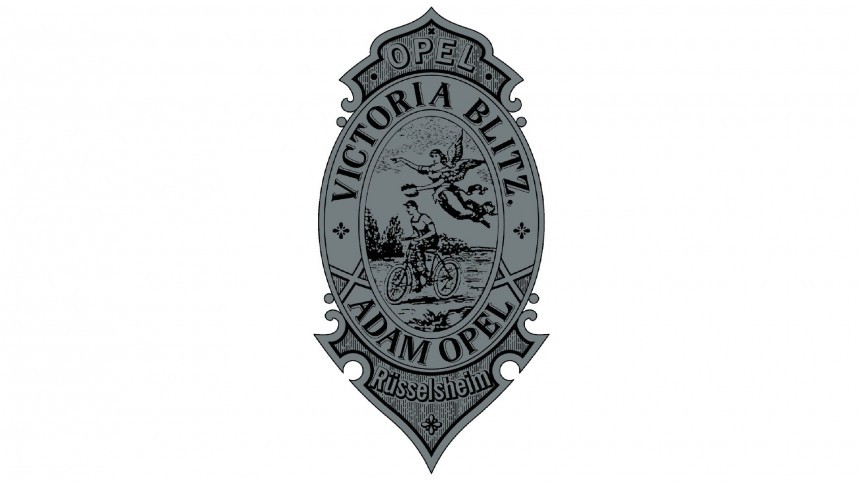Opel, the German carmaker – and one of the oldest brands in the automotive universe – is changing its logo once again, just 31 months after it adopted the current corporate identity symbol. There’s no secret in the company’s plans to become electric-only within the next five years, so it's pretty clear that the new emblem - to be used from 2024 - will emphasize the piston-free future of automobility.
In all fairness, the logo will basically maintain the world-renowned encircled lightning bolt and the supporting “OPEL” script. The two horizontal lines forming the famous Z-shape’s top and bottom are no longer connected. Still, the color theme has remained true to the simple black-and-white contrasting gamut.
The lightning bolt – Blitz in German – has been the company logo for over nine decades, albeit not present in this form and not universally adorning the grilles of Opels from its inception. First stylized on the company’s famous commercial vehicle line from 1931, the overstretched Z was chosen after the name of the then-new truck model was coined.
In 1931, Opel became a fully-owned subsidiary of General Motors – the American giant had already acquired 80% of the German company in 1929 – and launched a new light truck model. The vehicle’s name was carefully chosen through a prized public competition in the fall of 1930.
There were several conditions that the new name for the new truck had to fulfill: it had to be a five-letter word (no more, no less), it had to be easy to pronounce in any language spoken on planet Earth, and it had to be a German word. Additionally, being a name, it had to have a meaning.
Opel’s advertising department chose a novel approach to find their name: a high-profile, high-prized campaign that invited everyone to make a suggestion, or a proposition, give a hint, come up with an idea, or deliver a straightforward solution.
In full-page ads in the wide-coverage newspapers of the time, Dr. Wilhelm von Opel, grandson of Adam Opel, the company’s founder, wrote a very compelling invitation (see it in the gallery): “Win an Opel! We are looking for a name that we want to make famous all over the world! The new truck is to set off on its successful career in Germany and beyond its borders under a name that identifies it as a German make and is also an expression of its superior quality.”
To make the alphabet treasure hunt more appealing, Opel offered a grand prize for the winner and four awards for the runners-up. A 4/20-hp limousine was the reward for the winning letter, and four Opel Motoclub motorbikes went to the second to fifth-place contestants.
By October 6, 1960, roughly 1.5 million entries had been submitted. The selection took a while as every single letter had to be opened, read, and processed by hand. Six weeks, to be precise: At the Opel Dealer Conference on November 24, 1930, in Frankfurt, the company Sales Manager pronounced the winner. “Blitz” was the name, and it proved to be a good omen for the German manufacturer (the nation’s most important automobile maker at the time).
The new truck quickly adopted the name on its grille, spelling it on the two vertical halves of the radiator grille, gently slanted to the left at an easy ascending angle. The words “Opel” and “Blitz” were inscribed on two ribbons, partially overlapping.
The truck emblem became the company’s logo some three decades after its first appearance; in the early sixties, the circle embracing the lightning bolt was penned and spread across Opel’s range. Over the following decades, it would undergo numerous alterations, but the general design remained virtually intact.
Chosen for its attributes of representing the origin, power, and performance of an Opel truck from 1930, the name – and its associated symbol – have come to symbolize over 160 years of German industrial production.
The company started as a sewing machine manufacturing family business, established by Adam Opel in 1862. After pioneering wine cork-making machines in Europe several years later, Opel began building bicycles under the prophetic name “Victoria Blitz.” That was 135 years ago, in 1888, and Opel quickly became the market leader in the sewing machine and bicycle-making segments.
The Blitz is now the heart of this German enterprise, having withstood the test of time, the trials of geopolitical landslide changes, and the tidal waves of globalization. It has embodied everything Adam Opel envisioned, and it now stands for the energetic, electric future of the company.
In a sense, Opel now parts ways with a significant portion of its history –internal combustion has been at the core of the German carmaker since 1899. That’s when the first automobile built by Adam’s sons saw the light of day. Fast forward 125 years, and the brand will offer electric powertrains for its entire lineup beginning 2024.
Opel was one of the pioneers of rocket propulsion in the late 1920s, essentially opening the way for rocket flight and, ultimately, the space age. At one point, liquid-fueled rocket-propelled Opel vehicles held the speed records on land and in the air.
Having recently celebrated its 75 millionth automobile in 2022 (a Grandland GSe plug-in hybrid), the German carmaker was the first in Europe to surpass 100,000 units per year in the 1930s. The company, now part of Stellantis, through its Peugeot Citroen ownership, is looking forward to its fast-coming all-electric future.
The lightning bolt – Blitz in German – has been the company logo for over nine decades, albeit not present in this form and not universally adorning the grilles of Opels from its inception. First stylized on the company’s famous commercial vehicle line from 1931, the overstretched Z was chosen after the name of the then-new truck model was coined.
In 1931, Opel became a fully-owned subsidiary of General Motors – the American giant had already acquired 80% of the German company in 1929 – and launched a new light truck model. The vehicle’s name was carefully chosen through a prized public competition in the fall of 1930.
Opel’s advertising department chose a novel approach to find their name: a high-profile, high-prized campaign that invited everyone to make a suggestion, or a proposition, give a hint, come up with an idea, or deliver a straightforward solution.
In full-page ads in the wide-coverage newspapers of the time, Dr. Wilhelm von Opel, grandson of Adam Opel, the company’s founder, wrote a very compelling invitation (see it in the gallery): “Win an Opel! We are looking for a name that we want to make famous all over the world! The new truck is to set off on its successful career in Germany and beyond its borders under a name that identifies it as a German make and is also an expression of its superior quality.”
By October 6, 1960, roughly 1.5 million entries had been submitted. The selection took a while as every single letter had to be opened, read, and processed by hand. Six weeks, to be precise: At the Opel Dealer Conference on November 24, 1930, in Frankfurt, the company Sales Manager pronounced the winner. “Blitz” was the name, and it proved to be a good omen for the German manufacturer (the nation’s most important automobile maker at the time).
The new truck quickly adopted the name on its grille, spelling it on the two vertical halves of the radiator grille, gently slanted to the left at an easy ascending angle. The words “Opel” and “Blitz” were inscribed on two ribbons, partially overlapping.
Chosen for its attributes of representing the origin, power, and performance of an Opel truck from 1930, the name – and its associated symbol – have come to symbolize over 160 years of German industrial production.
The company started as a sewing machine manufacturing family business, established by Adam Opel in 1862. After pioneering wine cork-making machines in Europe several years later, Opel began building bicycles under the prophetic name “Victoria Blitz.” That was 135 years ago, in 1888, and Opel quickly became the market leader in the sewing machine and bicycle-making segments.
In a sense, Opel now parts ways with a significant portion of its history –internal combustion has been at the core of the German carmaker since 1899. That’s when the first automobile built by Adam’s sons saw the light of day. Fast forward 125 years, and the brand will offer electric powertrains for its entire lineup beginning 2024.
Opel was one of the pioneers of rocket propulsion in the late 1920s, essentially opening the way for rocket flight and, ultimately, the space age. At one point, liquid-fueled rocket-propelled Opel vehicles held the speed records on land and in the air.
Having recently celebrated its 75 millionth automobile in 2022 (a Grandland GSe plug-in hybrid), the German carmaker was the first in Europe to surpass 100,000 units per year in the 1930s. The company, now part of Stellantis, through its Peugeot Citroen ownership, is looking forward to its fast-coming all-electric future.
